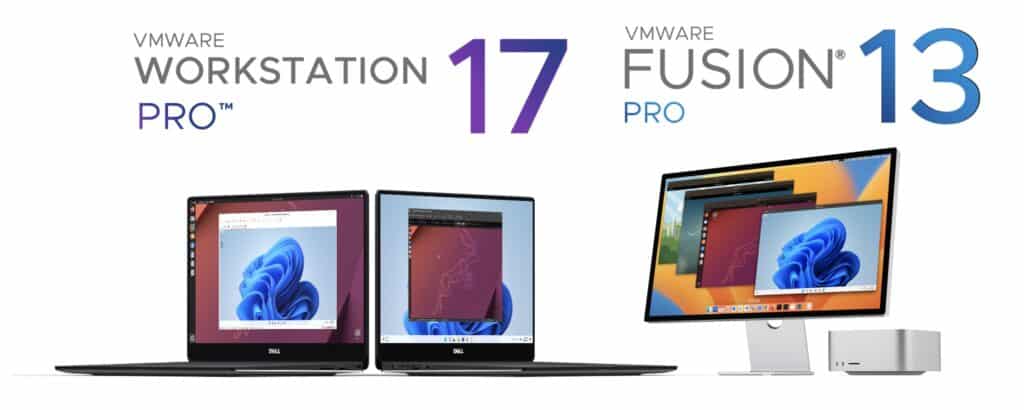Here’s the translation into American English:
In a surprising and significant decision for the world of virtualization, VMware has announced that its desktop software, VMware Workstation, will shift its virtualization infrastructure, moving away from its proprietary code in favor of the Kernel-based Virtual Machine (KVM), an open-source technology widely used in the Linux ecosystem. This change marks an important evolution for VMware, which has previously developed and maintained its own virtualization code alongside KVM.
Details of the Shift to KVM
The move was revealed this week when Broadcom engineer (formerly VMware) Zack Rusin published a series of patches for the Linux kernel on the kernel mailing list, titled “KVM: x86: Minor changes to support VMware guests.” These patches include essential modifications to enable VMware virtual machines to run smoothly under KVM. Among the introduced changes is the ability to enable VMware’s “backdoor” on a per-VM basis and the option to redirect certain system calls (hypercalls) to userspace for better compatibility.
Rusin mentions in his proposal that transitioning to KVM will require these small adjustments in the Linux kernel for VMware virtual machines to run efficiently without modifications. Furthermore, Broadcom has confirmed that the aim of these patches is indeed for VMware Workstation on Linux to function based on KVM, a virtualization technology already integrated into the Linux kernel.
Impact and Timeline of the Transition
Although Broadcom has not provided an exact date for the change, it is likely that the process will extend into 2025 or beyond, due to the time required for kernel changes to be approved and adopted by major Linux distributions. This delay is attributed to the Linux kernel merge windows and the time it takes for non-continuous release-based Linux distributions to integrate new kernel versions.
This change represents a significant victory for the KVM community, which sees one of the giants of virtualization adopting its technology. While VMware Workstation will continue to be a commercial product, this shift towards KVM is a notable milestone in the acceptance of open-source technologies for high-performance enterprise solutions. For the KVM community and the virtualization world, VMware’s move symbolizes an increasing adoption of open standards in a sector traditionally dominated by proprietary technologies.
A Hybrid Commitment: CPU on KVM, but VMware Virtual Devices
Broadcom has clarified that, even though VMware Workstation will use KVM for CPU virtualization on Linux, it will continue to maintain its proprietary virtual devices for graphics and other functionalities. This means that, while CPU virtualization will be handled by KVM, the user experience of VMware, especially regarding graphics and other components, will remain distinct and proprietary to VMware. Additionally, in its macOS and Windows versions, VMware has already begun using each operating system’s native virtualization frameworks, marking a transition toward virtualization approaches based on each platform’s native solutions.
Why KVM and Why Now?
This shift to KVM is not coincidental. The KVM community has demonstrated a remarkable ability to adapt to new demands and evolve technologically, making it an attractive option for companies seeking stability and efficiency. KVM, directly integrated into the Linux kernel, allows VMware to leverage an optimized technology that is compatible with the latest improvements in Linux, without the need to develop and maintain parallel proprietary code. Additionally, using KVM could reduce development costs and increase the flexibility of VMware Workstation in Linux environments.
The Future of VMware Workstation in the Open Source Virtualization World
While VMware Workstation will continue to be a commercial tool, its use of KVM represents a significant opening towards open source in a sector that has historically been closed and proprietary. With this transition, VMware could harness the power of the KVM developer community and contribute to the development of virtualization in Linux. This decision also positions VMware to compete in a market where the use of open technologies is becoming a standard.
The shift to KVM could open new opportunities for VMware in terms of interoperability and feature development that have not been possible within a completely proprietary framework until now. This transition can be seen as part of a wider trend in the tech industry towards the adoption of open technologies and the integration of collaborative solutions.
In Summary
VMware’s decision to adopt KVM as the foundation for its virtualization platform on Linux marks a milestone in the virtualization world and in the relationship between major companies and open-source software. This movement, still in development, has the potential to change how virtualization solutions are perceived and utilized in corporate environments. With the support of KVM, VMware Workstation promises a smoother and more efficient integration into Linux, while still maintaining its innovations and unique features that have made it a standout option in the industry. This step towards a hybrid approach represents a breakthrough for both VMware and the open-source virtualization community, solidifying KVM as a reference option in the realm of global virtualization.
via: Phoronix

